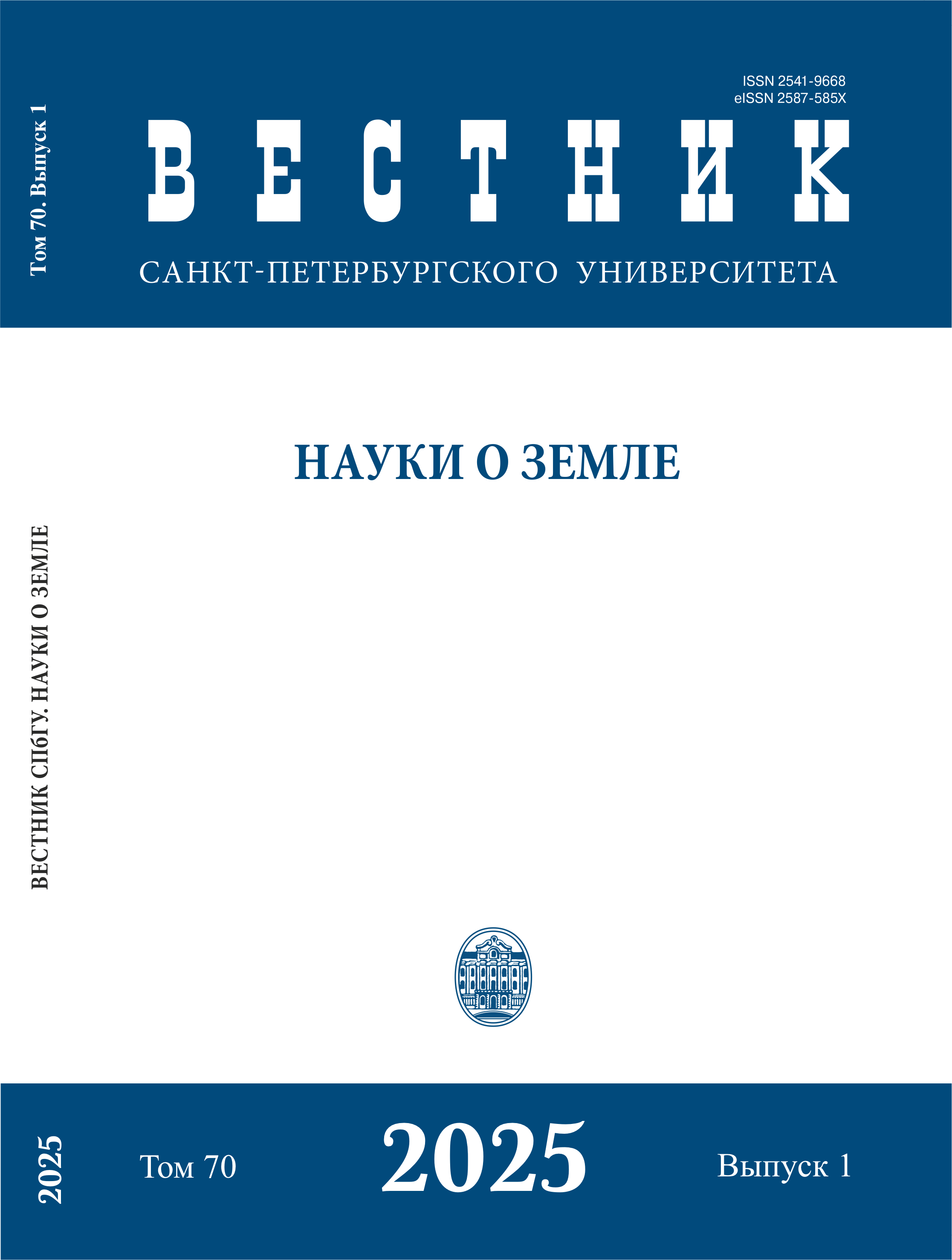Mineralogy and geochemistry of the "pink horizon" of varve clays of the Onego ice lake
DOI:
https://doi.org/10.21638/spbu07.2025.109Abstract
The features in the paragenetic associations of minerals of different bundles of varve clays in stratified cores in small lakes (Polevskoye, Lavozero) and the Unitskaya Bay of Lake Onega, located on the territory occupied by the Onego Ice Lake, were revealed as a result of using micro-X-ray and X-ray fluorescence scanning of statified cores in comparison with the data of studying on an electron microscope, and the modern method of mathematical modeling complex XRD profiles of layered silicates. It has been established that in the composition of the stratigraphically aged "pink horizon", relatively above and below the overlying bundles of varve clays of the Onego Ice Lake, the iron content increases due to changes in the quantitative ratios of the mineral phases of fraction of layer silicate minerals: a decrease in the amount of biotite, muscovite, with the appearance of illite-smectite and chlorite-smectite of a more ferruginous composition relative to micas. The combination of changes in the paragenetic associations of minerals, in their composition and morphology of aggregate indicates that the formation of the "pink horizon" of varve clays occurs under warmer conditions, which is associated with abrupt changes in the catchment area of the Onego Ice Lake, where the role of chemical weathering increases, and the territory of material demolition shifts towards the crystalline rocks of the Fennoscandian shield.
Keywords:
varve clay, "pink horizon", geochemistry, mineralogy, micro-X-ray and X-ray fluorescence scanning, Onego Ice Lake
Downloads
Downloads
Published
How to Cite
Issue
Section
License
Articles of "Vestnik of Saint Petersburg University. Earth Sciences" are open access distributed under the terms of the License Agreement with Saint Petersburg State University, which permits to the authors unrestricted distribution and self-archiving free of charge.






